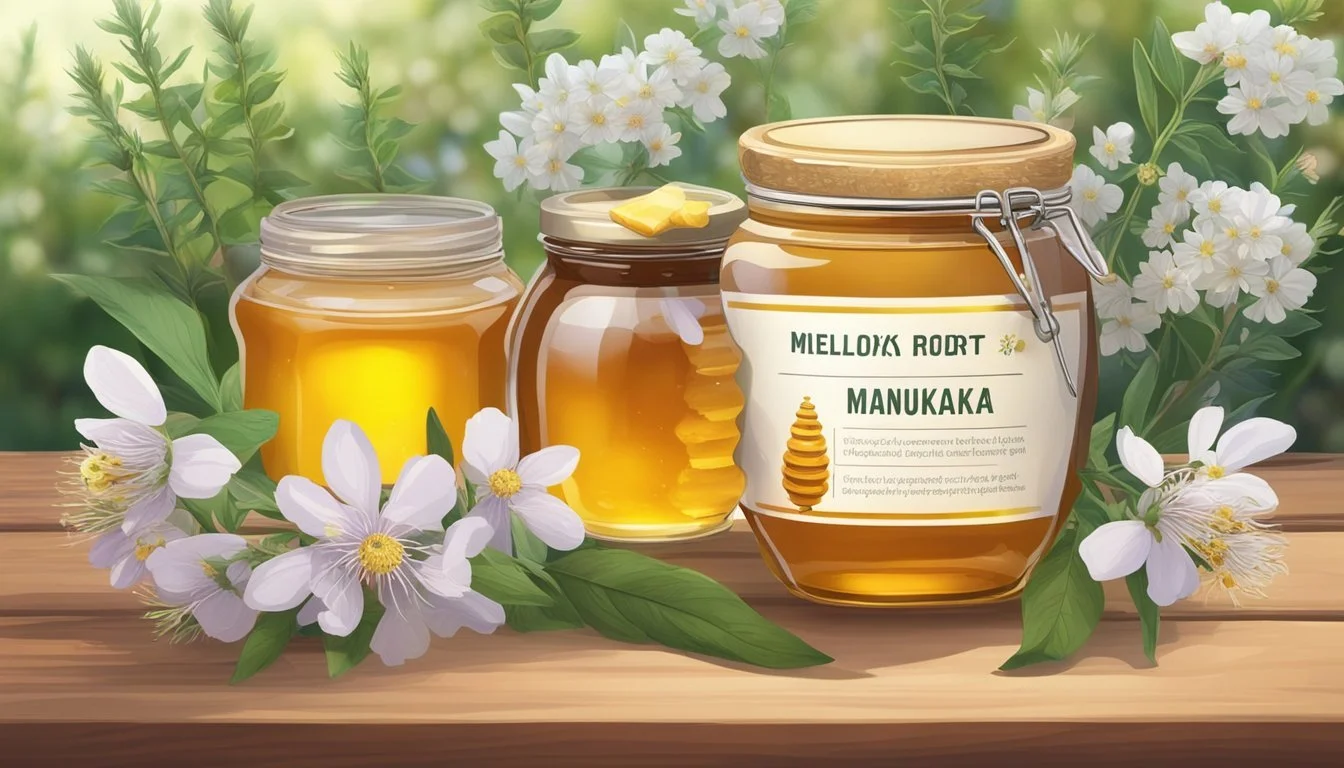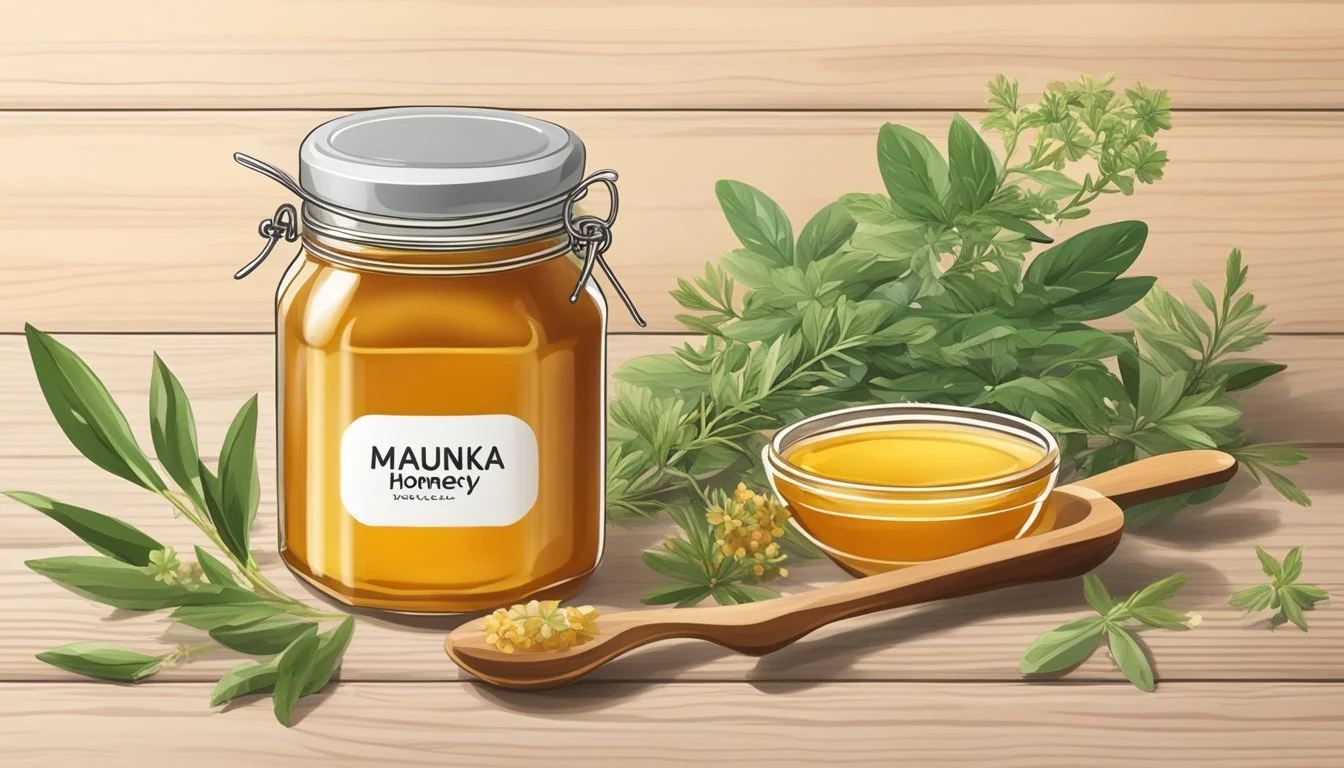The Truth About the Health Benefits of Manuka Honey
Unveiling the Research Findings
Manuka honey, a monofloral honey (What wine goes well with honey?) produced from the nectar of the manuka tree native to New Zealand and Australia, has garnered global attention for its purported health benefits. Touted for its unique properties, it is not just a natural sweetener but has traditionally been used in various medical applications. Distinct from other honey varieties, Manuka honey contains methylglyoxal (MGO), an organic compound with potent antibacterial effects, making it a subject of interest within the scientific community and among health enthusiasts.
The claims surrounding Manuka honey are vast, ranging from wound healing and soothing sore throats to potentially improving digestive issues and even contributing to better sleep patterns. Research has provided some evidence supporting these uses, highlighting Manuka honey's antibacterial, anti-inflammatory, and antioxidative capacities. Studies point to its efficacy in treating wounds, burns, and skin ulcers and suggest that it may inhibit bacterial growth resistant to standard antibiotics.
As with many natural remedies, there's a balance to be struck between anecdotal experiences and scientifically proven efficacy. The conversation around Manuka honey involves examining the evidence-based health benefits—and the extent to which these benefits can be generalized. It is essential for consumers to discern which claims have solid scientific backing and to understand the scope of Manuka honey's health potential.
Origin and Nature of Manuka Honey
Manuka honey, renowned for its unique properties, has gained international recognition. This section intricately explores its origins, the pivotal quality markers, and the botanical source that sets it apart from other honeys.
Geographical Roots: New Zealand and Australia
Manuka honey hails primarily from New Zealand and, to a lesser extent, Australia. In New Zealand, the honey is produced by bees that pollinate the Leptospermum scoparium bush, commonly known as the Manuka bush. Australia's Manuka honey is derived from different Leptospermum species and is not as tightly regulated.
Unique Manuka Factor (UMF) and MGO
The quality and potency of Manuka honey are evaluated by two key indicators: the Unique Manuka Factor (UMF) and the concentration of methylglyoxal (MGO). The UMF measurement is a comprehensive reflection of the honey's purity and quality, encompassing various attributes such as MGO content.
Indicator Function UMF Measures purity, quality, and unique attributes MGO Shows antibacterial strength
New Zealand's UMF grading system ensures the authenticity of Manuka honey, while in Australia, the quality is often gauged by measuring just the MGO levels.
The Manuka Bush and Its Flowers
The Manuka bush or Leptospermum scoparium is revered as the source of Manuka honey. Its white or pink flowers produce a rich nectar, which bees convert into honey. The very essence of this nectar, carrying its unique signature properties, is what distinguishes Manuka honey from other varieties.
Health Benefits and Uses
Manuka honey is renowned for its unique health benefits, ranging from its potent antibacterial properties to its role in fostering tissue regeneration. This section unpacks the evidence supporting its uses in various health contexts.
Antibacterial and Antimicrobial Properties
Manuka honey contains an active ingredient called methylglyoxal (MGO), which gives it significant antibacterial effects. Research indicates that Manuka honey can inhibit a broad range of harmful bacteria, including strains that cause skin infections and H. pylori, which is associated with stomach ulcers.
Wound Healing and Tissue Regeneration
Clinical studies have demonstrated that Manuka honey's antibacterial and anti-inflammatory actions make it effective as a topical treatment for wounds, burns, and skin ulcers. Its ability to promote healing stems from both its infection-fighting properties and its support of tissue regeneration.
Dental and Oral Health
Applying Manuka honey has been linked to combating oral bacteria responsible for gingivitis and tooth decay. It can also soothe a sore throat, providing a dual benefit for oral health.
Anti-Inflammatory Effects
The anti-inflammatory properties of Manuka honey contribute to its ability to reduce the inflammation associated with a range of conditions, including treating wounds and possibly offering relief from inflammatory bowel disease.
Potential Benefits for Digestive Health
Manuka honey is thought to have a beneficial effect on digestive health. It may help in reducing the symptoms of conditions linked to inflammation and infection in the gastrointestinal tract, such as stomach ulcers and inflammatory bowel disease.
Scientific Evidence and Research
Manuka honey has captured the attention of the scientific community for its unique properties. Rigorous clinical studies and comparisons to traditional antibiotics form the basis of understanding its medicinal potential.
Clinical Studies on Manuka Honey
Researchers have analyzed Manuka honey for its components that contribute to its antibacterial properties. The presence of methylglyoxal (MGO) has been correlated with its ability to combat bacteria including Staphylococcus and Streptococcus species. Studies have shown that it may also be effective against wound infections and conditions like diabetes where infection control is crucial. MRSA, a type of staph infection resistant to many antibiotics, has been a particular focus of Manuka honey research due to its potent antibacterial effects.
Additionally, cancer treatment-related research indicates that Manuka honey could support the healing process after chemotherapy. While not a cure for cancer, its role in supporting wound healing is significant; its antibacterial action minimizes the risk of infection.
Comparison to Traditional Antibiotics
When compared to traditional antibiotics, Manuka honey demonstrates a complex antibacterial action primarily due to compounds such as MGO and hydrogen peroxide. Its ability to fight superbugs resistant to standard antibiotics is particularly notable. The antibacterial component dihydroxyacetone (DHA), which is found in high concentration in the nectar of Manuka flowers, is believed to convert to MGO during the honey's maturation.
Research suggests that, while Manuka honey does contain these potent antibacterial substances, it may complement rather than replace traditional antibiotics. Its use is especially considered for topical applications where it can provide a moist wound healing environment, and its low pH can help reduce the bacterial load.
Safety and Side Effects
When considering the safety and side effects of Manuka honey, individuals should be aware of allergic reactions, appropriate dosages, its use in infants, and potential interactions with certain medications and conditions.
Allergic Reactions and Honey Allergy
Manuka honey, like all honey types, can cause allergic reactions in people sensitive to bee pollen. Symptoms may include itching, irritation, and severe allergic responses such as anaphylaxis. Those with diagnosed honey or bee pollen allergies should avoid Manuka honey altogether.
Considerations for Infants and Dosage
Infants: Under the age of one, infants should not be given Manuka honey due to the risk of botulism, a condition caused by the bacteria Clostridium botulinum which can be present in honey.
Dosage: For adults and children over one, there is no standardized dosage for Manuka honey, but moderation is key due to its high sugar content.
Interactions with Medications and Conditions
Manuka honey may affect the efficacy of certain drugs, especially those used for chemotherapy or to manage diabetes. It may also alter the effectiveness of sedatives due to its calming properties. Patients with diabetes should monitor their blood sugar levels closely if consuming Manuka honey, as it can impact glycemic control. It's crucial for individuals to consult healthcare professionals before adding Manuka honey into their diet, particularly if they have existing health conditions or are on any medications.
Practical Application and Usage
Manuka honey's purported health benefits span various applications, from dietary to topical uses. It offers options for those seeking natural remedies in addressing health concerns.
Manuka Honey in the Diet
Incorporating Manuka honey into one's diet can be beneficial for internal health challenges. It may be used as a natural sweetener in teas or on toast, contributing to its ease of use. Some individuals find that consuming Manuka honey can soothe coughs and ease sore throats due to its antimicrobial properties.
Blood Sugar: There is some debate, but some sources suggest that when used in moderation, Manuka honey may have a lesser impact on blood sugar compared to regular sugars.
Anti-inflammatory: Its anti-inflammatory effects may help in reducing inflammation associated with internal ailments.
Topical Use for Skin and Wound Care
The external application of Manuka honey has been recognized for its potential in topical treatment for numerous skin conditions.
Acne and Skin Ulcers: The antibacterial qualities of Manuka honey may assist in treating acne and promoting healing in skin ulcers.
Tissue Regeneration: It's credited with assisting tissue regeneration in minor wounds and could aid in faster healing.
For wounds, a thin layer of Manuka honey can be applied on a dressing before covering the affected area.
Oral Use for Throat and Mouth Ailments
Manuka honey has found a place in oral care, often used to combat ailments of the mouth and throat.
Sore Throats: A spoonful of Manuka honey can coat the throat, providing a protective barrier that may help with discomfort from sore throats.
Harmful Oral Bacteria: Research suggests Manuka honey has a potential in reducing harmful oral bacteria, therefore supporting oral health.
For dental health, using Manuka honey as a natural antimicrobial agent for mouthwashes has shown promise in various studies.
Consumer Considerations
When purchasing Manuka honey, consumers are often confronted with challenges concerning authenticity and high prices. The consideration of these factors is crucial to ensure one accesses the therapeutic benefits while making an informed decision.
Authenticity and Certification
Consumers should seek Manuka honey with a Unique Manuka Factor (UMF) rating, which guarantees the honey's purity and quality. UMF is a global standard in identifying and measuring the antibacterial strength of Manuka. Honey that boasts a UMF rating has been independently tested and certified for therapeutic constituents like methylglyoxal (MGO). Alternatively, they can look for the MGO rating directly.
It is important to check for certification marks on the label, such as the New Zealand UMF Honey Association trademark or similar endorsements. Buying honey that is FDA registered can provide additional assurance as it denotes compliance with food safety regulations.
Price and Availability
Manuka honey is typically more expensive than regular honey due to its perceived therapeutic properties and the stringent testing required for certification. Consumers should:
Compare prices across reputable suppliers.
Be wary of prices that seem unusually low, as this could indicate a lack of authenticity.
The availability of genuine Manuka honey can vary, with authentic products often found in health food stores, online markets, or directly from suppliers in New Zealand. Registered dietitians or healthcare providers might offer recommendations on where to find such products. Despite its cost, many consumers are willing to invest in Manuka honey for its potential health benefits.
Environmental and Ethical Aspects
When considering the health benefits of Manuka honey, it is crucial to address the environmental and ethical aspects of its production. These include sustainable beekeeping practices and the impact of these practices on bees and biodiversity.
Sustainable Beekeeping Practices
Sustainable beekeeping is vital for the production of Manuka honey. Beekeepers must adhere to practices that ensure their operations do not deplete natural resources or negatively affect the environment. Specific guidelines in place for sustainable beekeeping include:
Limiting the placement of hives to prevent overharvesting of Manuka nectar, which can lead to resource depletion for both the bees and other native pollinators.
Avoiding the use of chemicals and pesticides that can harm bees and contaminate the honey.
Ensuring the health and welfare of the bees are maintained, promoting longevity and productivity of the colonies.
These measures are designed to protect the environment while yielding high-quality honey.
Impact on Bees and Biodiversity
The production of Manuka honey has a direct effect on bees and local biodiversity. It is essential that these impacts are minimal and positive:
Bee Health: Maintaining strong, healthy bee colonies is a priority. Beekeepers are responsible for protecting their bees from diseases and ensuring that they have access to a diverse range of flora.
Biodiversity: The conservation of indigenous plants, especially the Manuka bush, is fundamental. Beekeeping practices must not disturb the local ecosystem, allowing for a symbiotic relationship between the bees and their natural habitat.
Proper practices help maintain an ecological balance, supporting both the production of Manuka honey and the flourish of local ecosystems.
Manuka Honey in Modern Healthcare
In the realm of modern healthcare, Manuka honey has emerged as a notable substance due to its antibacterial properties and its usage in wound dressings within hospitals. Its potential as an alternative to conventional treatments is also being explored.
Use in Hospitals and Wound Dressings
Hospitals have recognized the role of Manuka honey in promoting wound healing. It maintains a moist wound environment, which can facilitate the healing process, and its high sugar content helps with wound debridement. Notably, Manuka honey possesses unique antibacterial qualities due to an active ingredient called methylglyoxal (MGO), which has been reported to be effective against a wide range of bacteria.
Hospitals Application Benefits Various Wound Dressings Antibacterial action Supports moist healing Aids in wound debridement
Alternative to Conventional Treatments
As an alternative to conventional antibiotics, which can sometimes lead to resistance, Manuka honey is being considered for its antibacterial properties that do not promote resistance in the same way. Due to its anti-inflammatory and antioxidant effects, it is used as a topical treatment for minor burns, cuts, and other skin ulcers. Its usage is expanding as a natural alternative in cases where traditional medications are less desired or less effective.







